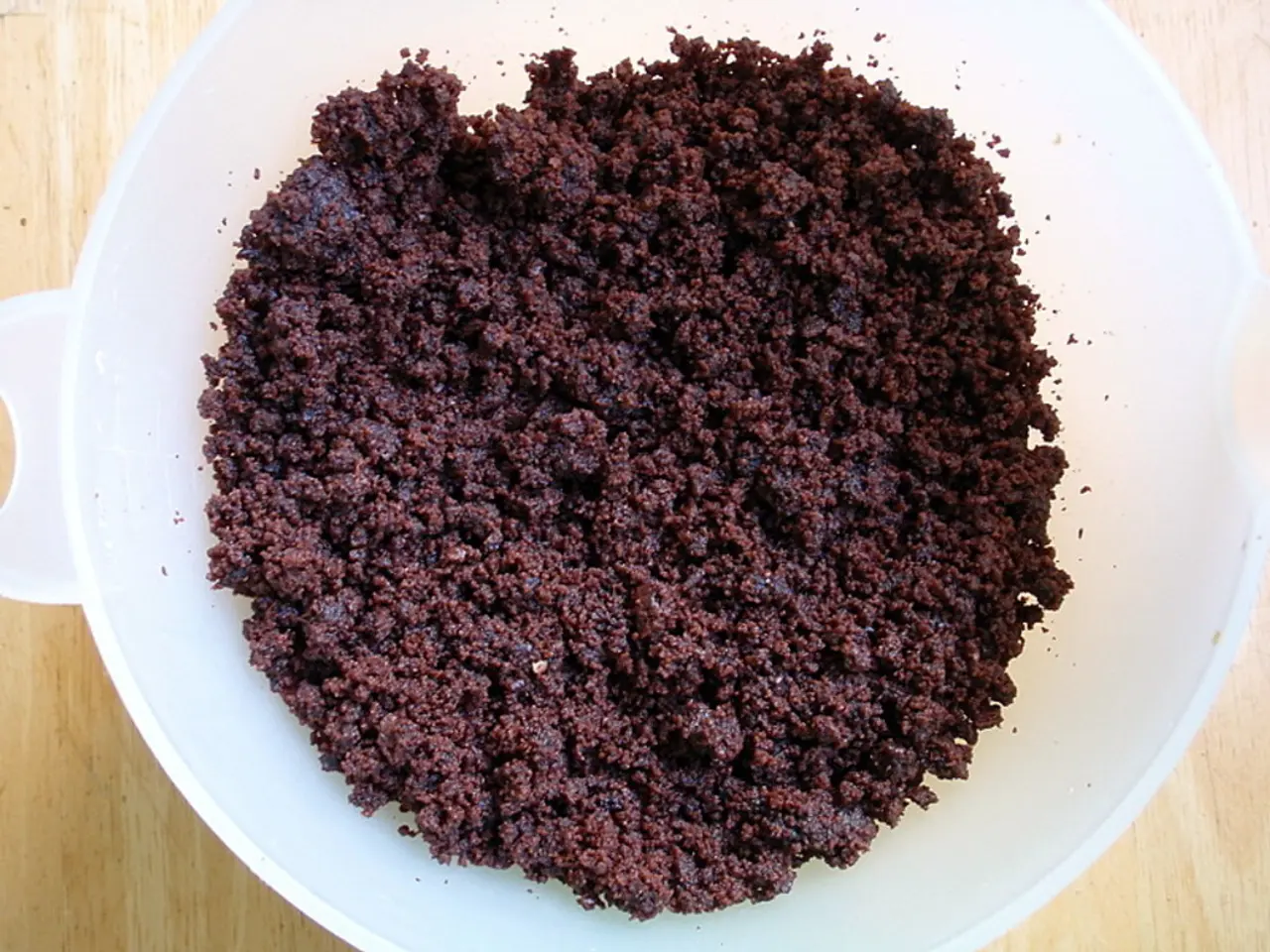Infant Bowel Movements after Breastfeeding: Understanding the Norms
In the world of parenting, there are numerous aspects to navigate, and one that often leaves new parents puzzled is their baby's poop. This article aims to provide a clear and straightforward guide to help parents understand the normal characteristics of a breastfed baby's poop, especially during the early weeks and as solid foods are introduced.
During the initial weeks, a breastfed baby's poop is typically runny, yellow, or mustard-coloured, sometimes greenish. The texture is similar to mustard, and the smell is mild, not offensive or strong. Frequency can be high, often multiple times a day, but this may vary depending on the mother's diet and any medications she is taking.
In the first few days, the baby may pass thick, blackish stools with a tar-like consistency, known as meconium stools. These usually disappear within a few days. Mucus in breastfed baby poop is not a cause for concern.
When a breastfed baby is overfed, poop may become loose, watery, greenish, or frothy, sometimes with a sour smell, and more frequent than usual.
Upon introducing solid foods, several changes in the baby's poop are common. The poop typically becomes darker in colour, often brownish or greenish, reflecting new food pigments. The consistency becomes thicker and less runny, moving from the watery mustard-like stools of breastmilk to more formed stools, sometimes resembling paste or soft solids. The frequency of pooping may decrease as solids are introduced.
Some babies may experience constipation, indicated by straining, hard pellet-like stools, fewer poops, or difficulty passing stools. It is advisable to monitor diaper changes closely during this transition to assess how solids are being tolerated by the baby’s digestive system.
It is essential to remember that every baby is unique, and their poop may not follow these exact patterns. However, if the baby's poop is black, very pale, consistently very hard, or contains blood or bright red streaks, it is advisable to call a doctor. A change in the baby's usual pooping pattern may sometimes mean that something is wrong, and it is best to take pictures of the poop and consult a doctor to get the most useful advice.
The American Academy of Pediatrics recommends introducing solid foods once a baby shows all signs of readiness for solids and is about 6 months old. A poop colour chart can provide insight into what different baby poop colours can mean, particularly for babies eating solids alongside breastfeeding.
In the first 6 weeks of a baby's life, most babies poop two to five times per day, or even after every feeding. After 6 weeks, babies' pooping habits vary more, with some babies pooping daily and others only a couple of times a week. A baby who poops significantly less than this or does not poop most days may not be getting enough breast milk.
In conclusion, understanding a breastfed baby's poop is crucial for parents to ensure their baby's health. By being aware of the normal characteristics of a breastfed baby's poop and the changes that occur with the introduction of solid foods, parents can monitor their baby's digestive health effectively.
A caregiver can use a poo color chart to better understand their breastfed baby's poop, especially during the transition to solid foods. Breastfeeding science suggests that normal characteristics of a breastfed baby's poop may include runny, yellow, or mustard-colored stools in the initial weeks, with mucus not being a cause for concern. However, if the baby's poop is black, very pale, consistently very hard, or contains blood or bright red streaks, parenting skills may require seeking advice from a medical professional.
In health-and-wellness and family-health contexts, it is important to remember that babies have individual digestive systems, making patterns vary among them. Mental-health awareness also includes understanding that monitoring a baby's poo can cause anxiety for some parents; however, staying informed on this aspect of parenting can help alleviate unnecessary concerns.
Lastly, the American Academy of Pediatrics advises introducing solid foods when a baby is around 6 months old and all signs of readiness for solids are present. This change in diet can lead to different poop colors, textures, and frequencies, which parents should monitor to ensure ongoing family health.




